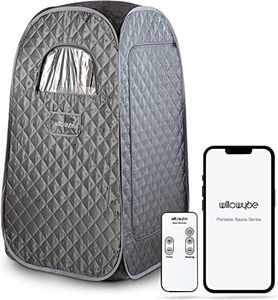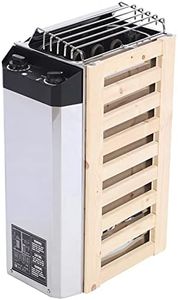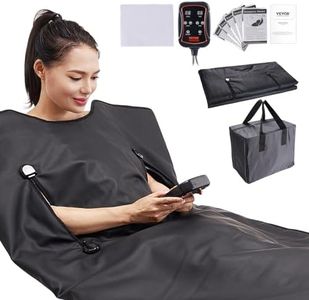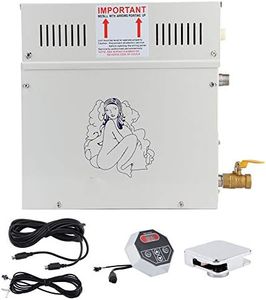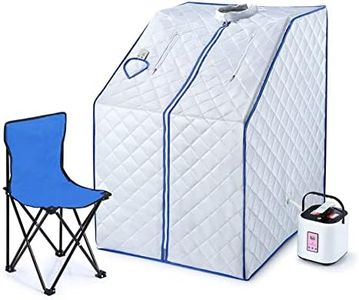We Use CookiesWe use cookies to enhance the security, performance,
functionality and for analytical and promotional activities. By continuing to browse this site you
are agreeing to our privacy policy
5 Best Sauna Heaters
From leading brands and best sellers available on the web.By clicking on a link to a third party's website, log data is shared with that third party.
Buying Guide for the Best Sauna Heaters
Choosing the right sauna heater is central to creating a satisfying and safe sauna experience. The heater you select will determine how quickly your sauna heats up, how easy it is to maintain the right temperature, and how much control you have over your sauna sessions. Taking time to understand the main features will help you match your sauna heater to your needs, the size of your space, and how you prefer to enjoy your sauna.Heater Type (Electric, Wood-burning, Infrared)The type of sauna heater defines the heat source used. Electric heaters are the most common, offering convenience, precise temperature control, and easy installation, especially in home settings. Wood-burning heaters provide a traditional, authentic sauna atmosphere and are best for places where smoke and venting are not issues, often in rural or outdoor settings. Infrared heaters work differently by warming your body directly without significantly raising the room's air temperature, offering a gentle and energy-efficient experience. When choosing, consider your sauna's location, your access to electricity or wood, and whether you want a classic or more modern sauna feel.
Power Output (kW Rating)Power output, measured in kilowatts (kW), determines how effectively and quickly the heater can warm up the sauna room. Typically, the bigger your sauna room, the higher the kW rating you’ll need. For small home saunas, a low kW (3-5 kW) is sufficient, for medium rooms, you might need 6-8 kW, and large or commercial saunas might require 9 kW or more. To choose the correct output, measure your sauna’s cubic volume and consult sizing guides, ensuring you avoid both underpowered (too slow or ineffective heating) and overpowered (unnecessarily high energy use) heaters.
Control OptionsSauna heaters come with various control systems, from simple mechanical dials to advanced digital panels or even remote controls via smartphone apps. Basic dials offer straightforward use but limited programmability, while digital controls enable features like delayed start, precise temperature setting, or maintenance notifications. Consider how much flexibility and convenience you desire—if you want a heater you can ‘set and forget’ or start remotely, digital controls may be ideal, whereas simplicity might suit those who prefer hands-on operation.
Stone CapacityThe stone capacity indicates how many sauna stones you can load onto the heater, which affects how well the heater retains and distributes heat, and how much steam (löyly) you can generate by pouring water over the stones. A higher stone capacity means slower heating but deeper, longer-lasting warmth and richer steam, ideal for extended sauna sessions. Smaller capacities are quicker to heat but retain less heat. Consider your sauna routine—if you like quick sessions, go for a lower stone capacity; if you enjoy long, steamy experiences, a higher capacity is preferable.
Safety FeaturesSafety features include automatic shut-off, overheating protection, protective casing, and child locks. These features help prevent accidents, particularly in home saunas or when the heater may be left on unintentionally. For families or public settings, robust safety features are crucial, while experienced adult users in private saunas might prioritize other specifications. Consider your household’s needs and how closely you want to monitor sauna use when evaluating safety.
Installation RequirementsDifferent heaters have specific installation needs – electric heaters might require special wiring and ventilation, wood-burning heaters need a chimney or flue, and infrared heaters require proper positioning and clearance. Installation complexity can affect your choice, especially if you’re planning a DIY project. Check what permits or professional help may be needed, and think about how much space you have for fitting the heater comfortably and safely in your sauna.
